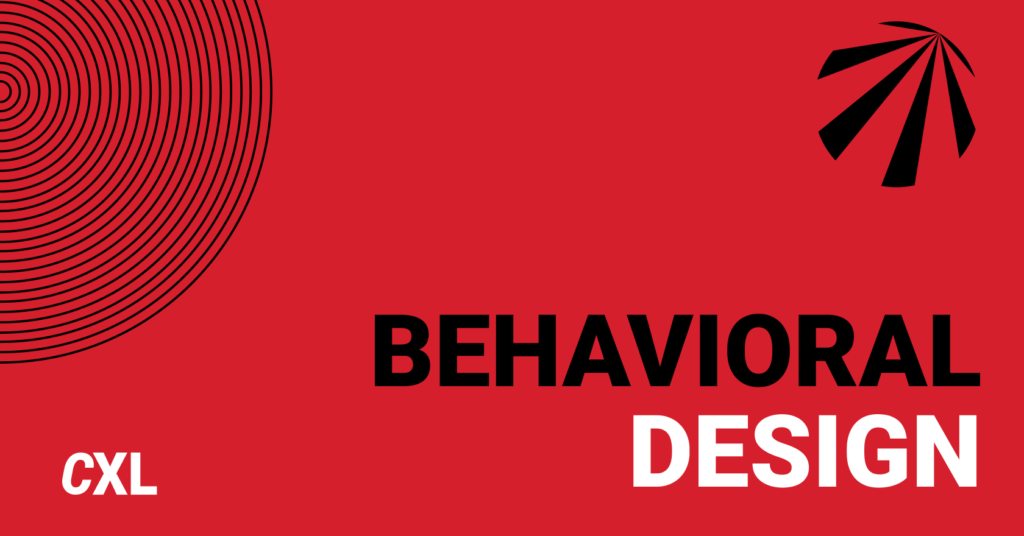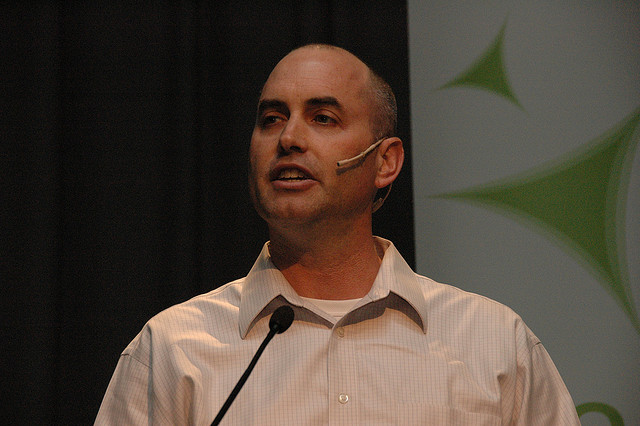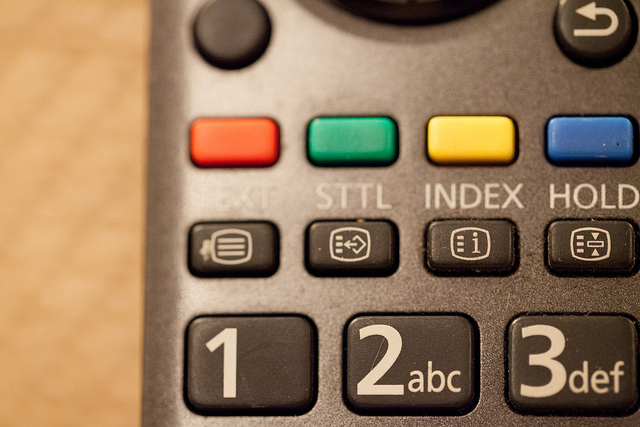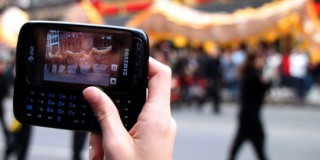Design impacts behavior. If you know how to impact behavior, you can design for behavior. Here’s how to do it.
Table of contents
Do you know BJ Fogg? You should. Dr. BJ Fogg founded the Persuasive Technology Lab at Stanford University, and has done some amazing research on credibility and behavioral design. Behavioral design is where psychology and technology meet – a systematic way to influence a desired behavior, one step at a time.
His model for driving behavioral changes – called The Fogg Behavior Model – explains that three elements must come together at the same time for a behavior to occur: motivation, ability and trigger.
When a behavior does not occur, at least one of those three elements is missing. Bottom line is this: Behavior = motivation x ability x trigger. Before I’ll go into how to apply it for boosting conversions, you need to understand the model itself. (All credit goes to BJ Fogg.)
Here’s the model:

Used with permissions by Persuasive Tech Lab
You want to aim top right (high motivation, easy to do, a trigger in place). If you have high motivation and low ability (difficult to do), what you’ll get is frustration. If it’s low motivation, but easy to do (e.g. take out the trash), you get annoyance.
Everything starts with defining the specific desired behavior– in our case it’s what we want the user to do, our conversion goal. It might be getting people to buy our product, sign up for our software and so on. Using this model as a guide, we can identify what stops people from taking the desired actions. For example, if users are not requesting quotes on your website, the model helps us evaluate what psychological element is lacking.
Let’s look at the elements individually.
Motivation
Ideally the user is already motivated to do the behavior (which is why he came to your site to begin with), and your role now is about helping people do what they already want to do (see Ability). The more motivated people are to do a behavior, the more likely they will do it (duh).
You can increase motivation with an effective sales copy and what not, but if you’re trying to artificially *create* motivation to make a behavior happen, you’re swimming upstream (and the current is strong).
Motivation is a term that’s used widely across various fields. BJ Fogg created a framework for motivation that has three core motivators, each with two sides.
Motivator #1: Pleasure / Pain
There are two sides to first motivator: pleasure and pain. How this motivator is different from others is that the result of this motivator is immediate. There’s almost no thinking or anticipating. People are responding to what’s happening in the moment. Pleasure and pain are a primitive responses related to self-preservation: hunger, sex, and other stuff related to keeping the humankind going.
Pleasure and pain are powerful motivators. It’s the first thing you should consider when trying to boost levels of motivation. This motivator type may not be the ideal approach, especially pain, but a thorough review of motivation means at least acknowledging these options.
Motivator #2: Hope / Fear
The second core motivator in the this model is a dimension that has the following two sides: hope and fear. This dimension is characterized by anticipation of an outcome. Hope is the anticipation of something good happening. Fear is the anticipation of something bad, often the anticipation of loss.
This dimension can be at times more powerful than pleasure/pain. For example, in some situations, people will accept pain (buying home insurance) in order to overcome fear (anticipation of your house burning down). However bear in mind that there’s no ranking of core motivators, so you should always give it some thought as to which one is the most appropriate to use.
Hope and fear have long been powerful motivators in persuasive technology. For example, people are motivated by hope when joining a dating web site. They are motivated by fear when they update settings in virus software.
BJ Fogg himself considers hope as the most ethical and empowering motivator.
Motivator #3: Social Acceptance / Rejection
The third core motivator has these two sides: social acceptance and social rejection. It impacts everything from the clothes we wear to the language we use.
As you probably know well from your own life experiences, people are motivated to do things that win them social acceptance and status. People are especially motivated to avoid any negative consequences like being socially rejected.
The roots of this are again deep in the history of human race – we depended on living in groups to survive. Regardless of the origin of the social motivator, the power over us is undeniable. We don’t need to look far to see evidence for this – even a simple thing like posting pictures to Facebook is driven significantly by the desire to be socially accepted.
Ability
Ability is all about whether the task at hand is it easy to do. If you want them to sign up for your product, but it takes filling 10 fields to do so, you’re setting yourself up for failure. Remember the $300 million dollar button story? A classic example of how taking action was made too difficult by forcing buyers to create an account first.
Ability is more important than motivation. If I’m committed to eat healthy – my motivation is super high – but there’s no healthy food around when I’m hungry, it’s very difficult to take desired action and I’ll probably grab something unhealthy instead. Motivation alone is not enough.
Its easier to increase conversions by making it easier to do, not by increasing motivation. If you have to choose what to optimize for, always choose ability over motivation. Become a master of simplification, not motivation. Have it as your goal to always make taking action as easy as 1-2-3.
The more “work” prospects need to do to understand and/or buy what you offer, the higher motivation is needed. Some think they need to teach or train people to use their software to address the ability issue – which is a good idea on paper – however most people don’t want to be taught and trained. They want single click and done behaviors. Also – don’t ask people to do something that’s against their routine. If they put their kids to sleep at 8pm, don’t have your webinar at 8pm.
Trigger
Without an appropriate trigger, behavior will not occur even if both motivation and ability are high.
Let’s say you read a blog post on this blog. You find it useful (motivation), and decide to share it with your followers on Twitter (ability – easy to do). Once you hit the ‘tweet’ button, you see this: That’s a trigger – urging you to follow me on Twitter. You weren’t thinking about following me, but now it’s right there. You probably have the motivation since you just shared my content, and you definitely have the ability – it just takes one click.
Trigger is what prompts you to take action: green light at the intersection, a lady in the supermarket asking you “would you like a sample?” or an email from your spouse saying “Call me right now”.
A call to action on a website is a trigger. Be careful what the content of the trigger. You need to trigger the right sequence of baby steps. If you’re selling $50,000 cars, the first trigger should not be “buy now”.
BJ Fogg likens this to the metaphor of swimming. You wouldn’t expect a person to just jump in the water and start swimming. Instead, you need step-by-step instructions and build up. BJ believes this is how we should approach health behavior; providing individuals small steps towards large success.
An example of a successful trigger would be getting an email from Facebook saying your friend tagged you on a photo. Who hasn’t responded to being tagged on a Facebook image?

Obsess about triggers like your business depended on it (since it does)
If you want your business to thrive and keep the sales coming in, you need to obsess about triggers! Don’t be afraid to use them – a trigger is not a nag, you’re helping them. You just need to make sure that you focus on triggering people that have the ability or motivation:
- If you trigger people at the right time, they will thank you.
- If you trigger then when they lack ability, they’ll get frustrated.
- If you trigger people when they don’t have motivation (e.g. asking people to shop for Christmas present in September), you’re annoying people.
2 kinds of triggers: hot and cold
Hot triggers are things you can do right now (e.g. buttons saying “Get immediate access” or “Download now”). Cold triggers are things which one cannot act on right now (e.g. billboard ads for a website you spot while driving).
BJ Fogg’s mantra for effective website design is: put “hot triggers” in the path of motivated people.
Don’t try to artificially create motivation, but instead tap an existing motivation people already have. It’s very difficult to motivate people to do something they don’t want to already do. Understand what motivation already exists then make it easy to get than done.
The importance of drip email campaigns
Are you requiring your users and prospects to remember stuff? If so, you’re doing it wrong. Build your trigger mechanisms as if people would never do anything without you asking them to do so. If your business sucks at trigger design, you’re going to fail.
Almost no behavior happens without trigger. This is why it’s important to send out promotional emails during Christmas and other holidays. They’re not going to just think “I think I’m gonna go to somestore.com and buy stuff!” Unless you’re Amazon and have occupied a large portion of their brain space, it’s not going to happen. You need to trigger their behavior with an email or other media.
Understanding behavior types
First step is understanding the target behavior. It has to be as specific as possible if you want to boost conversions. Second step: understand target behavior type. BJ Fogg describes 15 ways behavior can change. Each of the 15 behaviors types uses different psychology strategies and persuasive techniques. Types of behaviors:
- Dot — It happens just once (e.g. they buy your e-book)
- Span — It happens over a period of time, like for 7 days (e.g. they take part of your 7-day course)
- Path — It happens over and over, from now on. (e.g. they join your social networking site and start hanging out there)
There are 5 sub-types for each three:
Image source
Most online conversions (join email list, sign up, buy product) are either green dot (taking a single action for the first time) or blue dot behaviors (taking a familiar single action).
Optimizing for green dot behavior – first time single action
Green dot behaviors are often used in the beginning stages of complex behavior inductions. For example, if a company is interested in creating a loyal, repeat customer, they might start off with a small introductory offer. This can then lead to more extensive, prolonged relations and, eventually, habitual purchasing behavior.
The main challenge that we face while triggering a Green Dot behavior is a lack of ability. Since Dot behaviors occur only once, the subject must have enough knowledge to successfully complete the action on the first attempt. Otherwise, frustration, and quitting, may occur.
- Couple the trigger with a motivational or facilitative element.
- Increase the ability of the subject by explaining the novel behavior in terms of one that is familiar.
- Increase the motivation of the subject by explicitly highlighting the benefits of the action.
Optimizing for blue dot behavior – familiar single action
Blue Dot Behaviors are among the easiest to achieve. That’s because the person, by definition, is already familiar with the behavior. They know how to perform it (such as exercise, plant a tree, buy a book). In addition, they already have a sense of the costs and benefits for the behavior.
- Three core motivators: sensation (pleasure/pain), anticipation (hope/fear), and belonging (acceptance/rejection)
- Best trigger: tell the visitor person to “do this behavior now.”
Conclusion
Understand that desired behavior takes place when motivation, ability and trigger converge.
In order to boost conversions you need to
- help people do what they already want to do,
- tap into the right motivators,
- understand the types of motivation,
- make taking action as easy as possible,
- focus on simplification,
- put hot triggers on the path of motivated people,
- and generally obsess about triggers like your business depended on it.











Wow Peep! You introduced me to alot of new concepts here… again, like you did with money ball..
This is very similar to Dr Flint’s model and Bryan and Jeffery Eisenberg. Dr Flint mentions the first two and the Eisenberg brothers mention the third.
Great post as always. The section “Understanding behavior types” could be elaborated in a separate post.
Wow, there’s a lot of great stuff here. I agree that simplification is so important when it comes to converting customers. As soon as something looks too complicated I go for the back button.
Great in-depth article! Thanks for sharing.
Great stuff. Motivation. Ability. Trigger. I’ve had a few ideas for my home page that I’m getting ready to put together and the ideas here put a nice frame of context around a few of the ideas I’ve been flirting with. Thanks so much for sharing this.
Awesome article! This is new stuff to understand to be able to be as efficient as possible when it’s time to convert our users!
Thanks Peep!
My best read this week! Thanks Peep!
I kept on reading. Certainly you’ve done your bit, so thanks for sharing these tips. I’m planning to launch a premium ebook a few months away from now and I’m already conducting surveys for research data and this post has come at the right time. Thanks again!
Aditya
Worth a read… gave me a base to work on… thanks for explaining the BJ Fogg principle in detail…